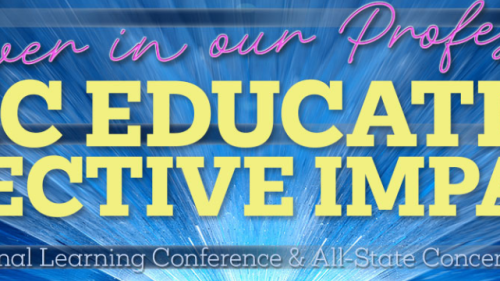COVID-19 has disrupted every facet of life, especially the working lives of countless people across the globe. National and statewide lockdowns have caused mass shutdowns, layoffs and furloughs. There have been upheavals in work schedules, changes in work locations and often simultaneous struggles to meet children’s educational needs at home. Dealing with this strange new reality has been challenging, to say the least. Across the public and private sectors, organizations have scrambled to navigate chaotic work environments. Stepping out of back offices and into center spotlights, the leaders of human resources management are transforming HR, rising to meet the new and pressing needs of today’s disrupted workforces.
Pre-pandemic employee benefits typically featured trendy perks like treadmill desks, free cereal bars, gourmet cafeterias, rock-climbing walls and meditation rooms.1 But with the massive shift in workers’ needs due to the pandemic, there’s been a corresponding shift from supporting employees’ workplace comforts to supporting employees’ whole lives.
Read on for a closer look at the evolving role of human resources management in public service to meet the top trending needs and wants of employees working during the pandemic days and beyond.
Top Five Trends of Human Resources Management in Public Service
Professionals in human resources management in public service are facing a previously unimagined crisis due to COVID-19. As a result, many HR teams are working on crisis response plans because, especially in a crisis, employees need to feel safe and supported to perform their best work.2 Ultimately, supporting and guiding workers to perform their best is more about providing an optimal employee experience than providing trendy perks. Creating this optimal experience is increasingly trending toward the following considerations:3
- Supporting and praising the productivity of new employees
- Facilitating performance coaching and feedback from managers
- Paying attention to how employees are feeling
- Sustaining development by offering relevant training for job growth
- Recognizing employee excellence when and how an employee prefers
High-tech trends have increasingly prevailed in the workforce due to the rise of digital work environments. However, the top trends lately influencing human resources management in public service are pleasantly non-tech. Hundreds of public sector respondents to Deloitte’s 2020 Human Capital Trends Survey confirm the need to “rise to the challenge to remain distinctly human in a technology-driven world.”4
There is an increasing emphasis on employee well-being, job stability and compensation. Together with a boost in organizational ethics and the elevated role of human resources management, the need “to remain distinctly human” is driving inspirational transformations in the workplace.5 In the following paragraphs, the top five trends shaping human resources management in public service are examined in greater detail.
A New Holistic Focus on Well-Being
Employee well-being has become a vital concern as the pandemic disrupts workers’ whole lives and directly impacts their ability to work. Prioritizing mental health is a driving trend, as employers help to de-stigmatize the issue by expanding mental health benefits. A major takeaway from Gartner’s 2020 ReimagineHR Employee Survey states, “Employer support for the entire employee life experience will become table stakes.” Gartner’s survey found a 20% increase in workers reporting improved mental and physical health in organizations with a holistic approach to employee well-being. Effectively supporting the whole life experience of employees also drives a potential 21% increase in the number of high performers.5
Active Involvement in Ethical Issues
Hanging a poster in the cafeteria promoting an equitable and diverse workforce is no longer acceptable proof of organizational support for equal opportunity. Employees are now expecting employers to proactively improve diversity, engage in cultural debates and actively promote social and ethical issues. Gartner’s 2020 survey reports that 74% of employees prefer working for mission-driven organizations where cultural values are closely aligned with theirs. And, when organizations are actively involved with today’s social issues, the number of highly engaged employees rises from 40% to 60%.5
Enhancing Job Security & Sustainability
Responding to a critical need for greater agility and resilience, HR leaders are redesigning employee development programs with an eye on the ever-changing future. Pandemic-related disruptions to work environments, schedules and workforces have brought new urgency to addressing the skills-gap crisis. The growing trend toward reskilling a current workforce is developing into a powerful strategy for enhancing employee job security and personal growth as well as protecting organizational sustainability and resilience.2
Upscaling Compensation
Rising to the challenge “to remain distinctly human,” organizations are now offering compensation packages with more appeal to human needs. In addition to bonus checks based on data-driven performance evaluations, rewards packages are being upscaled to include employee wellness and lifestyle benefits. HR leaders are finding that prospective employees prefer compensation packages with additional features such as health and wellness programs, work flexibility, learning and development opportunities and performance recognition.2,4
Promoting the Role of Human Resources Management
HR leaders’ roles are evolving and expanding as employee needs evolve and expand. Workers are needing help to connect, perform and thrive under dynamically changing circumstances. New approaches to worker well-being are rolling out, such as training managers to recognize the signs of employees struggling and how to offer assistance. Coordinating meaningful conversations and activities around current social and ethical issues is helping to build powerful connections between employees’ values and an organization’s ultimate mission.
Facing and addressing the unprecedented spectrum of an entire workforce’s human needs during the COVID-19 pandemic has significantly engaged the time and attention of HR leaders. Providing supportive employee experiences exceeding past expectations is clearly promoting appreciation for the role of HR. It has also transformed organizational appreciation for individual humanity by distinctly promoting the ‘human’ in human resources.
Ready for a New Role?
With all the recent changes in workplace environments, leaders of human resources management in public service are enjoying greater influence than ever before. Promoted from the back office to a central office with a commanding view, HR leaders are helping transform the lives and livelihoods of an organization’s greatest asset—its human workforce.4
People are in greater need of support from their organizations these days and HR professionals are stepping up to meet those needs. If you’re a current public administration student or someone interested in a career as an HR leader, consider how an online Master’s of Public Administration from Kent State can prepare you for top-tier public service success.
If you’re ready for a new role as a human resources director, our affordable and convenient 100% online MPA program will give you the knowledge, skills and credibility to rise to the top and drive inspirational change in the “distinctly human” workforce.
Sources:
- Retrieved April 17, 2021, from bbc.com/worklife/article/20201110-what-happens-to-workplace-perks-now-that-no-ones-in-office
- Retrieved April 17, 2021, from 15five.com/blog/top-hr-trends/
- Retrieved April 17, 2021, from the-future-of-commerce.com/2020/11/30/2021-hr-trends/
- Retrieved April 17, 2021, from deloitte.com/us/en/pages/public-sector/articles/human-capital-trends-government-perspective.html
- Retrieved 17 April 2021, from gartner.com/smarterwithgartner/9-work-trends-that-hr-leaders-cant-ignore-in-2021/





